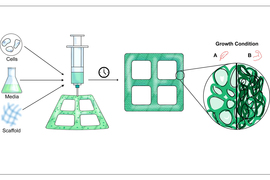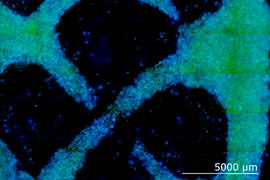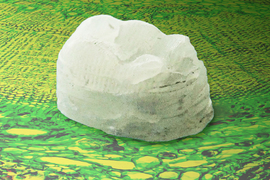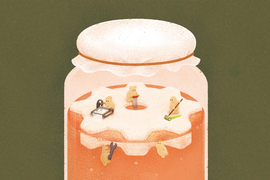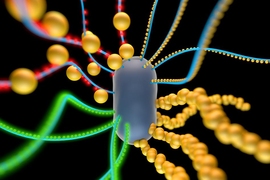Each year, the world loses about 10 million hectares of forest — an area about the size of Iceland — because of deforestation. At that rate, some scientists predict the world’s forests could disappear in 100 to 200 years.
In an effort to provide an environmentally friendly and low-waste alternative, researchers at MIT have pioneered a tunable technique to generate wood-like plant material in a lab, which could enable someone to “grow” a wooden product like a table without needing to cut down trees, process lumber, etc.
These researchers have now demonstrated that, by adjusting certain chemicals used during the growth process, they can precisely control the physical and mechanical properties of the resulting plant material, such as its stiffness and density.
They also show that, using 3D bioprinting techniques, they can grow plant material in shapes, sizes, and forms that are not found in nature and that can’t be easily produced using traditional agricultural methods.
“The idea is that you can grow these plant materials in exactly the shape that you need, so you don’t need to do any subtractive manufacturing after the fact, which reduces the amount of energy and waste. There is a lot of potential to expand this and grow three-dimensional structures,” says lead author Ashley Beckwith, a recent PhD graduate.
Though still in its early days, this research demonstrates that lab-grown plant materials can be tuned to have specific characteristics, which could someday enable researchers to grow wood products with the exact features needed for a particular application, like high strength to support the walls of a house or certain thermal properties to more efficiently heat a room, explains senior author Luis Fernando Velásquez-García, a principal scientist in MIT’s Microsystems Technology Laboratories.
Joining Beckwith and Velásquez-García on the paper is Jeffrey Borenstein, a biomedical engineer and group leader at the Charles Stark Draper Laboratory. The research is published today in Materials Today.
Planting cells
To begin the process of growing plant material in the lab, the researchers first isolate cells from the leaves of young Zinnia elegans plants. The cells are cultured in liquid medium for two days, then transferred to a gel-based medium, which contains nutrients and two different hormones.
Adjusting the hormone levels at this stage in the process enables researchers to tune the physical and mechanical properties of the plant cells that grow in that nutrient-rich broth.
“In the human body, you have hormones that determine how your cells develop and how certain traits emerge. In the same way, by changing the hormone concentrations in the nutrient broth, the plant cells respond differently. Just by manipulating these tiny chemical quantities, we can elicit pretty dramatic changes in terms of the physical outcomes,” Beckwith says.
In a way, these growing plant cells behave almost like stem cells — researchers can give them cues to tell them what to become, Velásquez-García adds.
They use a 3D printer to extrude the cell culture gel solution into a specific structure in a petri dish, and let it incubate in the dark for three months. Even with this incubation period, the researchers’ process is about two orders of magnitude faster than the time it takes for a tree to grow to maturity, Velásquez-García says.
Following incubation, the resulting cell-based material is dehydrated, and then the researchers evaluate its properties.
Wood-like characteristics
They found that lower hormone levels yielded plant materials with more rounded, open cells that have lower density, while higher hormone levels led to the growth of plant materials with smaller, denser cell structures. Higher hormone levels also yielded plant material that was stiffer; the researchers were able to grow plant material with a storage modulus (stiffness) similar to that of some natural woods.
Another goal of this work is to study what is known as lignification in these lab-grown plant materials. Lignin is a polymer that is deposited in the cell walls of plants which makes them rigid and woody. They found that higher hormone levels in the growth medium causes more lignification, which would lead to plant material with more wood-like properties.
The researchers also demonstrated that, using a 3D bioprinting process, the plant material can be grown in a custom shape and size. Rather than using a mold, the process involves the use of a customizable computer-aided design file that is fed to a 3D bioprinter, which deposits the cell gel culture into a specific shape. For instance, they were able to grow plant material in the shape of a tiny evergreen tree.
Research of this kind is relatively new, Borenstein says.
“This work demonstrates the power that a technology at the interface between engineering and biology can bring to bear on an environmental challenge, leveraging advances originally developed for health care applications,” he adds.
The researchers also show that the cell cultures can survive and continue to grow for months after printing, and that using a thicker gel to produce thicker plant material structures does not impact the survival rate of the lab-grown cells.
“Amenable to customization”
“I think the real opportunity here is to be optimal with what you use and how you use it. If you want to create an object that is going to serve some purpose, there are mechanical expectations to consider. This process is really amenable to customization,” Velásquez-García says.
Now that they have demonstrated the effective tunability of this technique, the researchers want to continue experimenting so they can better understand and control cellular development. They also want to explore how other chemical and genetic factors can direct the growth of the cells.
They hope to evaluate how their method could be transferred to a new species. Zinnia plants don’t produce wood, but if this method were used to make a commercially important tree species, like pine, the process would need to be tailored to that species, Velásquez-García says.
Ultimately, he is hopeful this work can help to motivate other groups to dive into this area of research to help reduce deforestation.
“Trees and forests are an amazing tool for helping us manage climate change, so being as strategic as we can with these resources will be a societal necessity going forward,” Beckwith adds.
This research is funded, in part, by the Draper Scholars Program.
